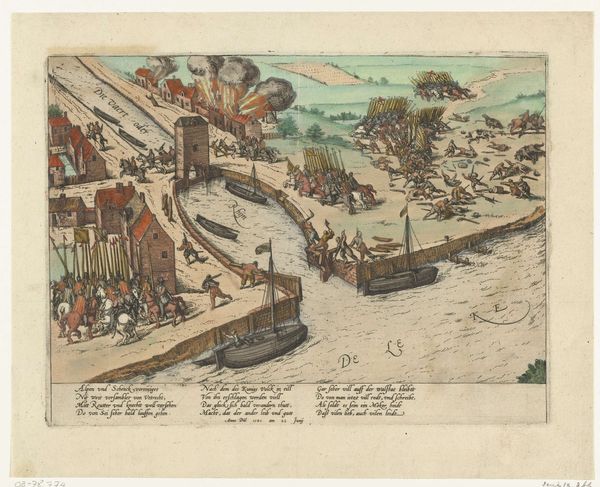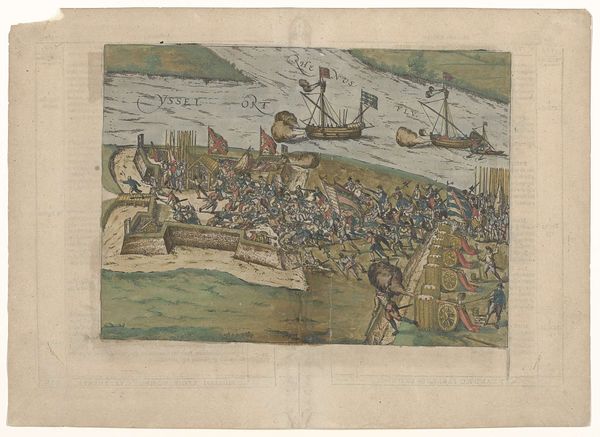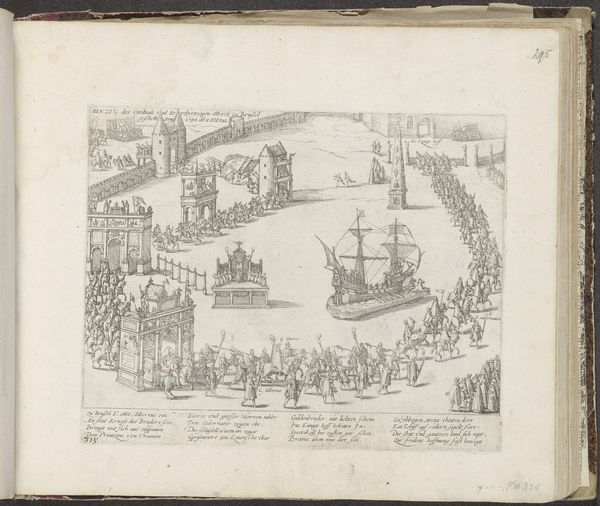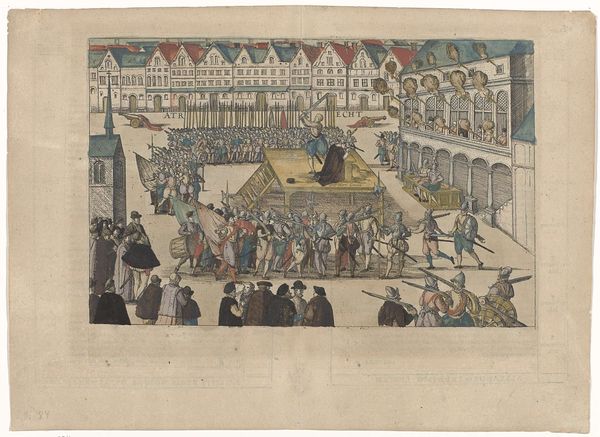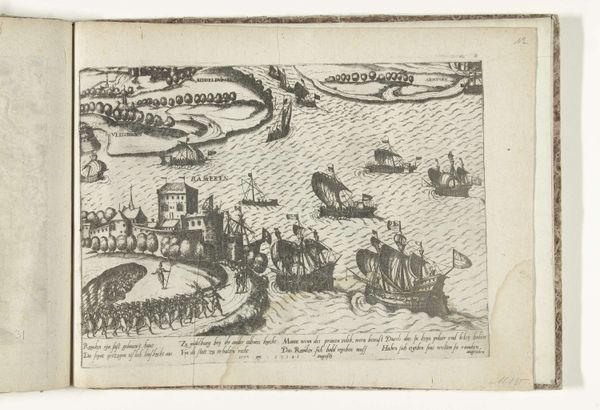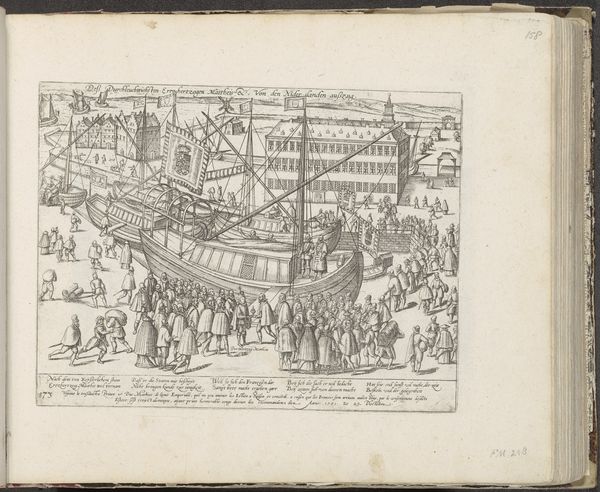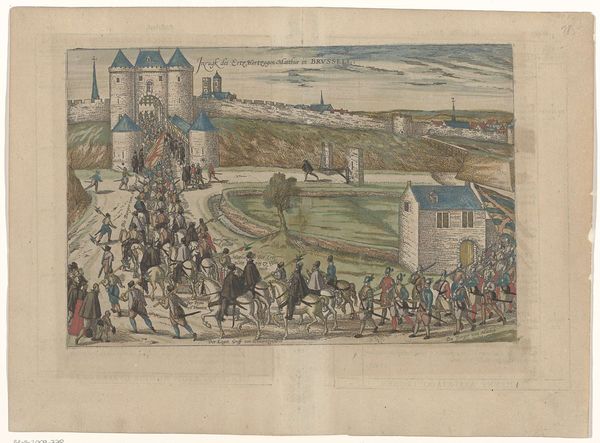
Dimensions: height 267 mm, width 360 mm
Copyright: Rijks Museum: Open Domain
Curator: Looking at this image, there’s an immediate sense of movement and pageantry, isn’t there? A festive occasion rendered with an almost obsessive attention to detail. Editor: It has an illustrative quality; almost naive in its perspective, and feels celebratory. What exactly are we looking at? Curator: This is an engraving by Frans Hogenberg titled “Entry of Prince William of Orange into Brussels, 1577”, made around 1588. It’s currently held at the Rijksmuseum. As the name suggests, the print depicts William’s formal entrance into the city, a pivotal moment in Dutch history. Editor: It’s fascinating to consider this as a “print.” We need to consider the production processes involved. The labor needed for engraving…and how the prints were distributed afterwards. I’m particularly interested in its function as accessible documentation, compared to a single, commissioned painting viewed by an elite few. What are the social implications of widespread image availability? Curator: Absolutely! Think about the socio-political context: Brussels was a highly symbolic and contested space during the Dutch Revolt. Representing William's entry so vividly served a clear purpose. The detailed rendering of the city walls, the crowds, the military escort – these images shaped public perception and cemented William’s image as a legitimate leader. Editor: Note the artist’s meticulous effort to display various social groups, reflected through garments and how different hands would manufacture and sell those various wares, revealing a slice of daily commerce embedded in the representation of civic life. The perspective almost flattens everything. Is this lack of visual hierarchy an attempt to include diverse urban communities? Curator: It could be, although the Prince is certainly central. It's a representation of the city recognizing their prince, isn't it? Beyond immediate appearances, it served the narrative construction. It legitimizes William’s authority by illustrating his triumphant welcome. These details would've carried considerable weight and served as potent propaganda. Editor: Agreed. And considering Hogenberg's Protestant sympathies, one can’t ignore the print’s role within broader efforts to portray William as a unifier of a rebellion, and even champion, to shift opinions, manufacture consent. The act of replication and consumption amplifies its meaning beyond simply witnessing the event. Curator: Reflecting on the imagery, I feel how prints were used to cultivate his narrative and project power. Editor: Exactly, the dissemination of reproducible imagery in forming shared visual narratives to build new social or political identities.
Comments
No comments
Be the first to comment and join the conversation on the ultimate creative platform.



